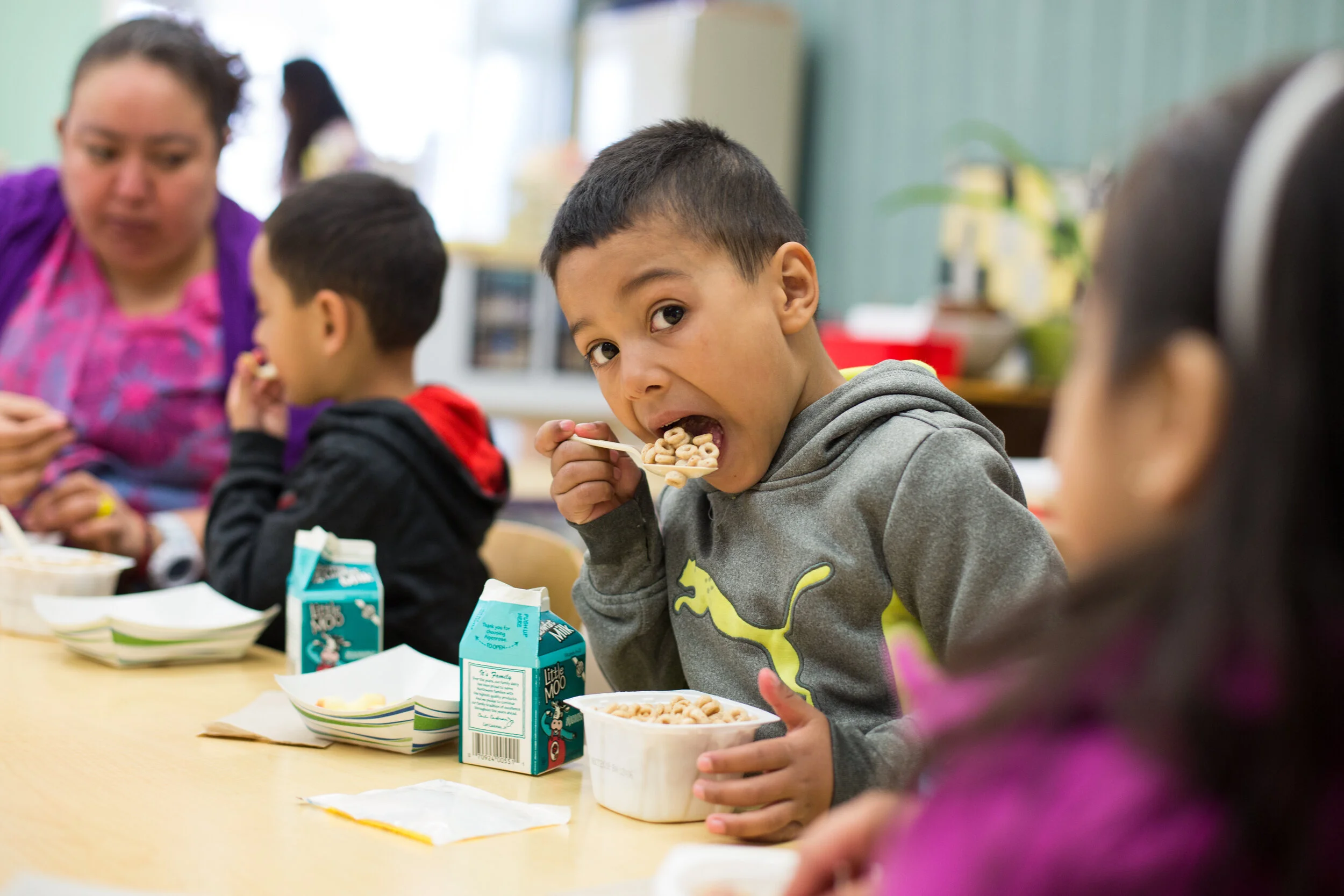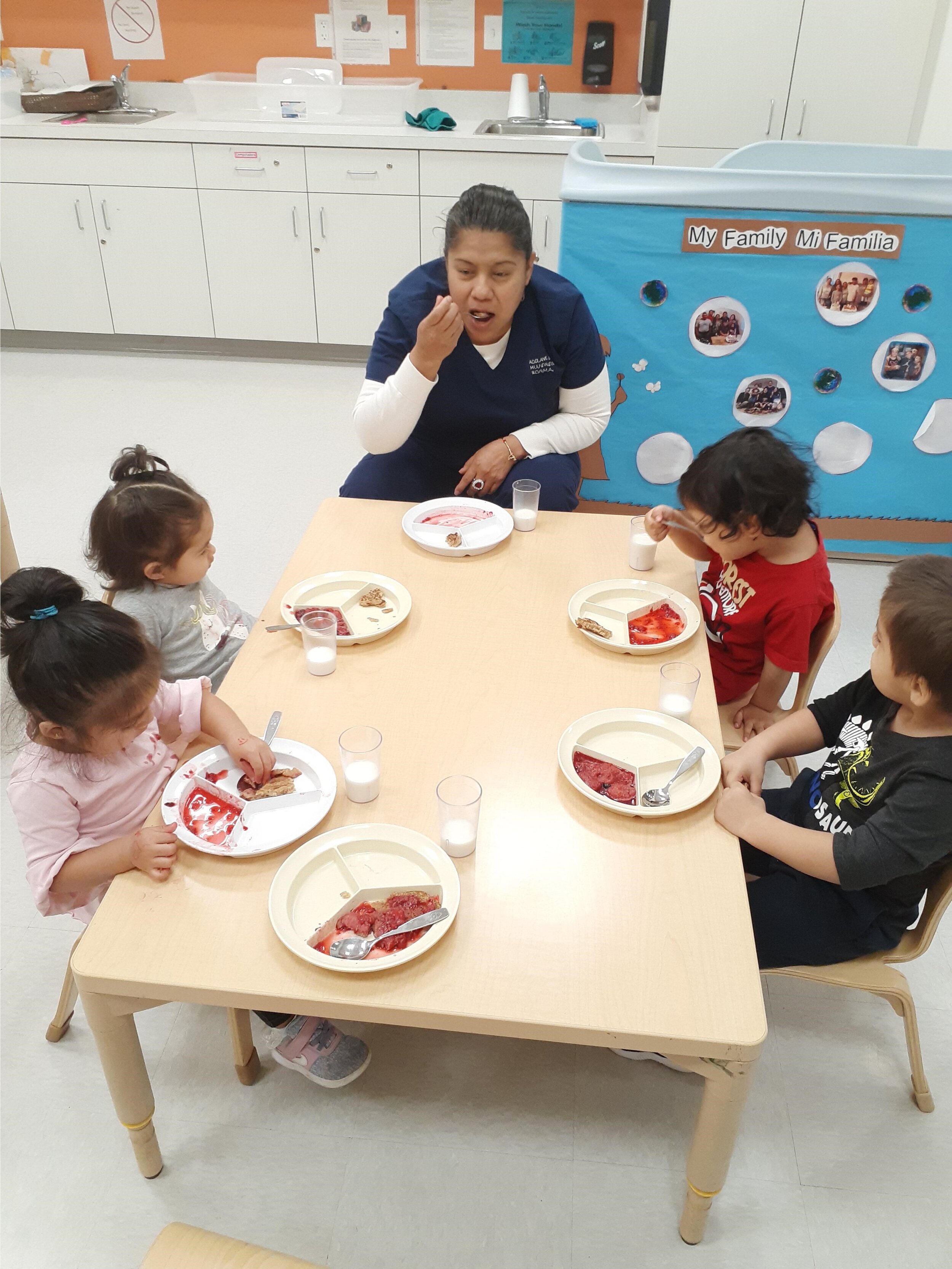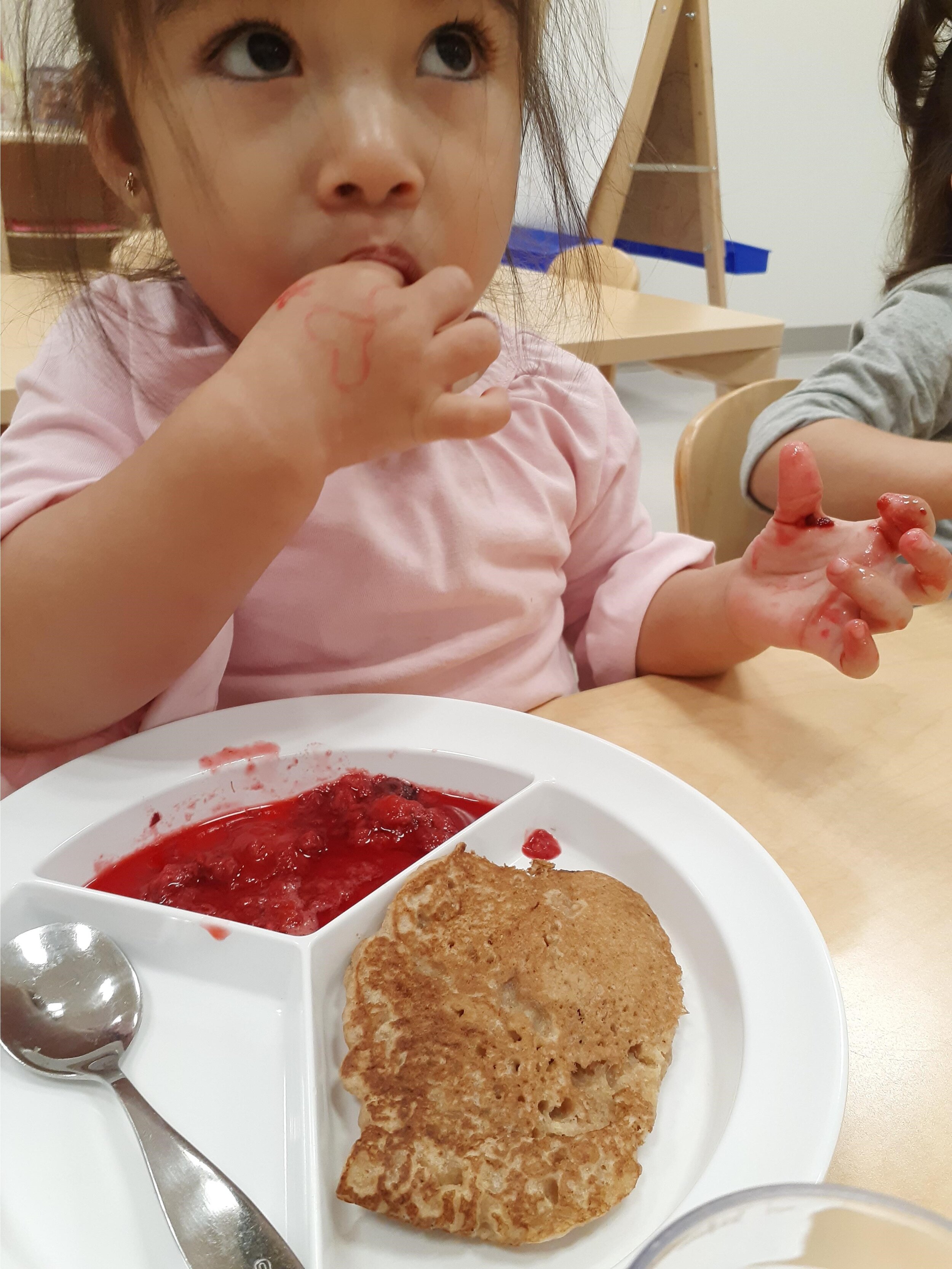Farm to (tiny) table: A look inside meal prep for our Early Childhood Education Program
Step into our kitchen
Gladis, our school cook, is chopping up juicy pineapples while a pot of posole bubbles on the stove. Colorful meals are being arranged on tiny plates, and small cups of milk are being poured. These meals will feed our youngest students — children in our Early Childhood Education Program.
The newly renovated Adelante Mujeres center now includes six new Early Childhood Education classrooms that provide affordable, high-quality, bilingual education for Latinx children (infants through preschool-aged) coming from low-income families. Many of their parents are essential workers, continuing to work hard throughout the COVID-19 pandemic.
One of the six Early Childhood Education classrooms at Adelante Mujeres. Teachers wrap up the day with extensive cleaning and disinfecting due to COVID-19.
The new center also includes a state-of-the-art commercial kitchen, which allows our team to serve breakfast, lunch, and an afternoon snack to our students every day. Our Nourish the Community Program team took on the challenge of designing the best meals possible for our little students. And a big question became ‘Where do we source the ingredients?’.
The commercial kitchen at Adelante Mujeres
The problem with convenience
When sourcing ingredients, it comes down to something we all wrestle with on a daily basis: convenience vs. quality.
Take carrots, as an example.
“You can buy a pound of baby carrots at the grocery store for much cheaper than a bunch of freshly picked carrots at the farmers market, and you have to take the time to wash, peel and cut the freshly picked local carrots,” explains Kaely Summers, Adelante’s Health Equity Manager. “We would argue that it's worth the time and extra money because we know that the freshly picked local carrots are going to taste much better and possibly have a higher nutritional content.”
According to Mount Nittany Medical Center, “when produce is picked before it’s ripe, the nutrients do not fully develop in the flesh of the fruit.” Baby carrots from the grocery store = convenient. Local carrots from the farmers market = quality.
Everyone deserves healthy food
Fruits and veggies purchased from local farmers at the Forest Grove Farmers Market, a program of Adelante Mujeres
“Some of the children we serve in our Early Head Start program have parents who are farm workers,” says Kaely, “and they don't always have access to the fruits of their labor. We believe that families deserve the highest quality, freshest, and most nutritious foods, no matter their income.”
Eating healthy food is directly connected to learning. “When children are well-fed and nourished, they are better prepared to learn and engage in the classroom,” explains Kaely.
So, as we began developing meal strategy for our students, the decision was obvious. Quality would be a top priority. Only the best for these little ones.
So, where do we source the ingredients? Latinx farmers.
The Regenerative Agriculture Program at Adelante Mujeres is working to build Latinx farm business owners who value Earth-friendly farming techniques, so when we began the search for local produce, we knew where to look.
A vendor at the Forest Grove Farmers Market who we buy produce from for our ECE Program.
“If we truly value the farmers' products, and we are trying to promote their farm businesses, and help create a demand for their produce, then we should also invest in their success by purchasing from them,” says Kaely.
She explains the complexity of sourcing the food as “a bit like a Tetris puzzle” and admits it’s a learning process. “It can be challenging to keep on budget and stay within the government guidelines, while also thinking about sourcing locally and paying farmers a fair price”.
Fresh berries at the Forest Grove Farmers Market, a program of Adelante Mujeres.
But flexibility and a willingness to play some meal planning Tetris is working.
“At first, we started with the goal of sourcing [from Latinx farmers] just one to two items a week, but many of the weeks we have been able to source much more,” says Kaely. “This last week we were able to find raspberries, cilantro, strawberries, zucchini, tomatoes, broccoli, apples, and pears.”
Making it delicious
“Introducing new flavors and varieties of vegetables can be met with resistance at first with young eaters,” says Kaely. But through yummy recipes, deliciously fresh veggies, cultural menus, and creative teachers who make eating healthy fun, the students have no hesitations with the nutritious meals.
“We served fresh, local cucumbers for a snack one day and one of the teachers said, "Wow, all the children ate those cucumbers because they were so fresh and tasted so good! Usually the children don't like eating cucumbers because they aren't that fresh."
It also helps to have teachers who know how to cultivate excitement about healthy foods by using all five senses. How does the squash feel? How does the cabbage smell? What does the strawberry taste like? What kind of sound does the lettuce make when you crunch it in your mouth? What colors of the rainbow do you see in this fruit salad?
An average day for the students is pretty yummy. For breakfast: arroz con leche, mixed fruit, and milk. For lunch: chicken enchiladas, green beans, melon, and milk. For an afternoon snack: mini tuna sandwiches and mixed berries.
The payoff of sourcing local food? It’s big.
Not only are our children healthier, but the community as a whole is impacted by these food choices. Kaely explains, “When the food only travels a few miles from where it was grown, it requires fewer fossil fuels, it means that we know who we are buying from, their farming practices, and it means that the money is being invested in our community. It's important to us that Latinx farmers are valued for their hard work and the heart they put into the food we eat and that children see them as superheroes instead of nameless farmer workers.”










